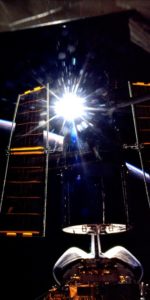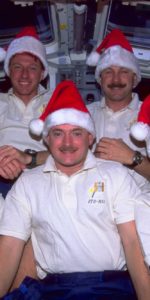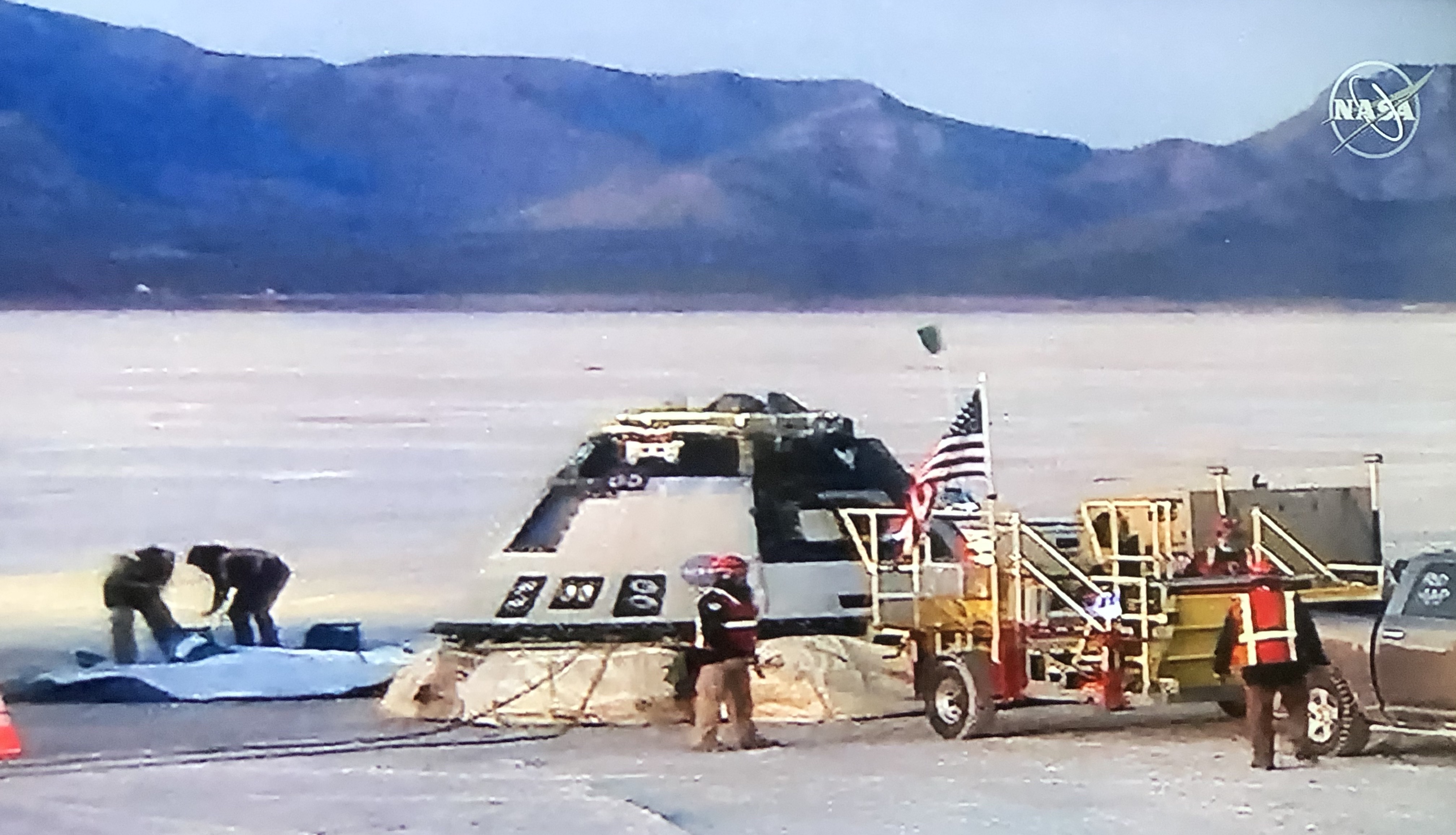
This morning, Boeing’s CST-100 Starliner returned to Earth and made a picture-perfect landing at White Sands, NM, closing out the spacecraft’s maiden voyage on the highly-anticipated un-crewed Orbital Flight Test for NASA’s Commercial Crew Program.
And while the mission was cut short due to an automated timing issue after launch, which caused ground controllers to call off a rendezvous with the International Space Station (ISS), Starliner teams were able to hit numerous other test objectives, including passing the most critical with flying colors; de-orbit, re-entry and landing.
Starliner conducted its deorbit burn at 7:23 a.m., separation of its service module, and successful deployment of its three main parachutes and six airbags before landing gently at 7:58 a.m. EST (5:58 a.m. MST) and marking the first time in history that an American made, human-rated space capsule has landed on terra firma from space. The last time a spacecraft landed at the White Sands Space Harbor runway was in 1982, when Space Shuttle Columbia touched down on STS-3.
“Congratulations to the NASA and Boeing teams on a bullseye landing of the Starliner. The hardest parts of this orbital flight test were successful,” said NASA Administrator Jim Bridenstine. “This is why we conduct these tests, to learn and improve our systems. The information gained from this first mission of Starliner will be critical in our efforts to strengthen NASA’s Commercial Crew Program and return America’s human spaceflight capability.”
Despite missing the ISS, Boeing was able to complete a number of other test objectives for NASA during the flight, including:
- Successful launch of the first human-rated United Launch Alliance (ULA) Atlas V rocket
- Checked out the Starliner propulsion systems, including conducting two orbital adjustment burns and several smaller checkout burns.
- Tested space-to-space communications
- Tested Guidance, Navigation and Control hardware including successfully using VESTA camera star tracking functionality to augment Space-Integrated GPS/INS (SIGI) navigational control. These are the “eyes” of the vehicle, which include using star trackers (capturing spacecraft orientation by comparing known star maps to stars the spacecraft observes) and far and near field observations.
- Tested Starliner’s NASA Docking System (NDS) in orbit by executing a series of extensions and retractions of its soft-capture system and docking ring.
- Validated all environment control and life support systems (crew would have been fine and comfortable).
- Communication, commanding and tracking systems testing through both ground links and space-to-space communication, including a positive command uplink from mission control through the ISS.
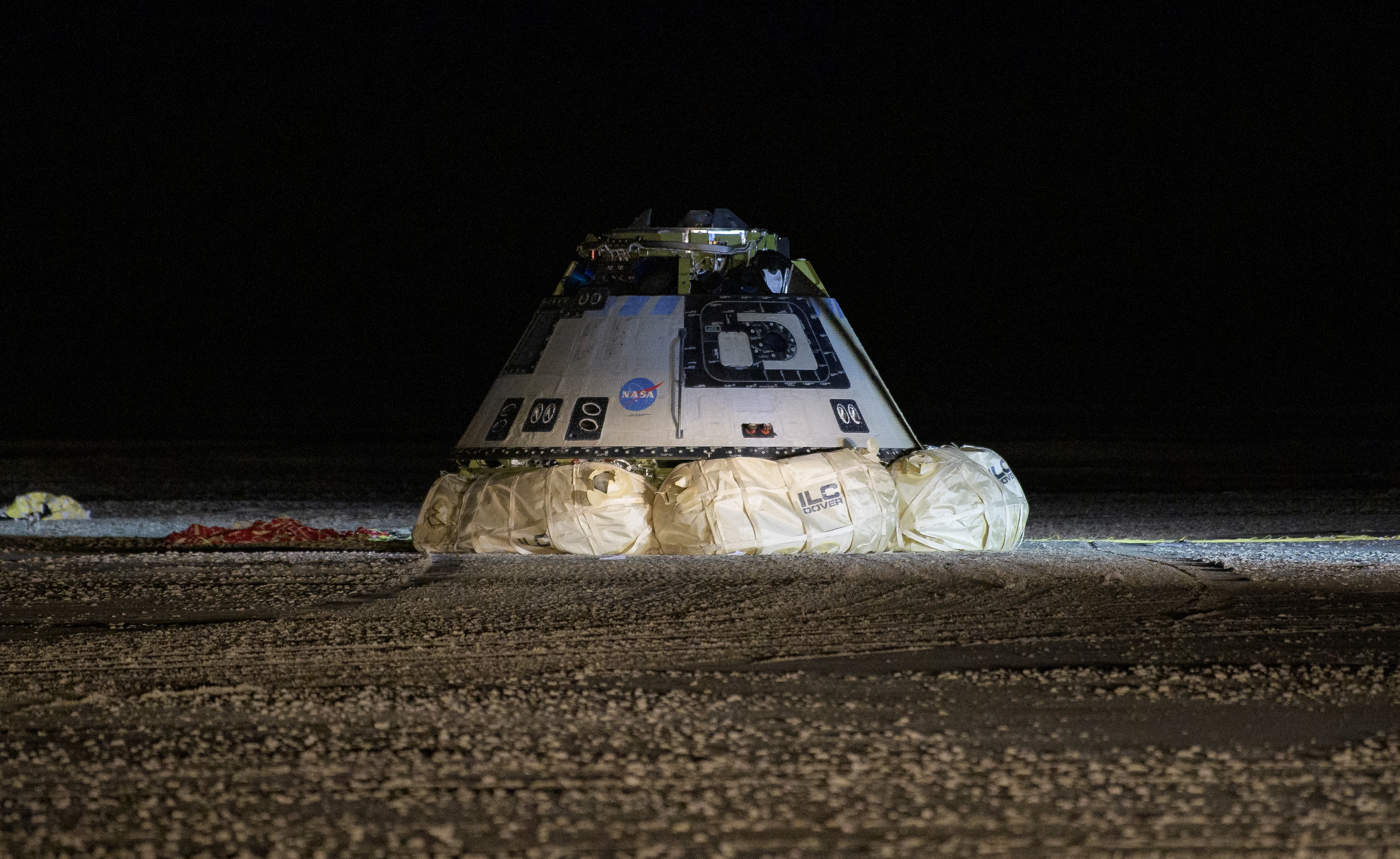
“Today’s successful landing of Boeing’s CST-100 Starliner spacecraft is a testament to the women and men who have dedicated themselves to ensuring Starliner can safely transport crews to low-Earth orbit and back to Earth,” said Boeing Senior Vice President of Space and Launch Jim Chilton. “The Starliner Orbital Flight Test has and will continue to provide incredibly valuable data that we, along with the NASA team, will use to support future Starliner missions launched from and returning to American soil.”
According to Boeing, the spacecraft remained healthy over the course of its mission, noting that its power system operated exceptionally, solar arrays operated at above predicted efficiency, and all separation events were nominal, including ascent cover jettison, aeroskirt jettison and separation from the Atlas V rocket following a flawless launch from Cape Canaveral, Fla.
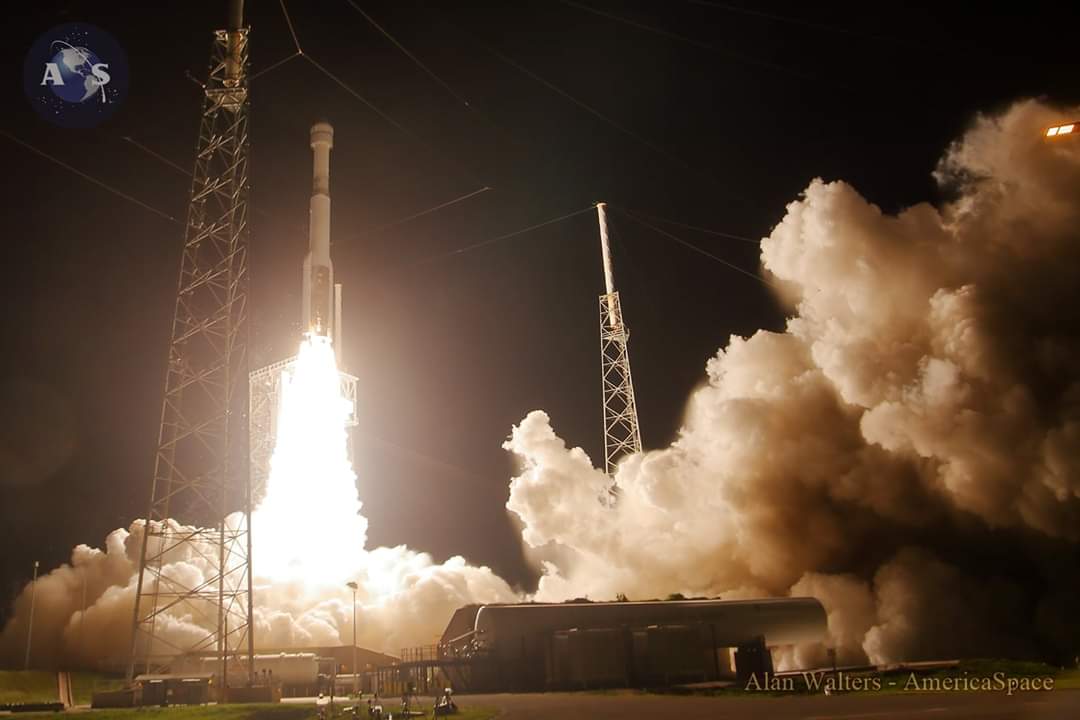
However, it soon became apparent that something was wrong, as the spacecraft thought it was at the wrong time in the mission, executing burns it did not need and using precious fuel. With an added blow of delayed TDRS relays from ground control telling the spacecraft what to do, it was determined to call off an ISS rendezvous to instead focus on the other test objectives, including protecting the most important; de-orbit, re-entry and landing.
“The anomaly appears to have been the result of a mission elapsed timer (MET) using an unexpected timeline, which delayed orbital insertion thruster firings, putting Starliner in an unplanned orbit,” said Boeing in a statement.
NASA noted following the launch that ISS rendezvous and docking is not a mandatory requirement for crew certification, and added that had crew been onboard they not only would have been fine, but they would have taken manual control and likely overcame the automated timing problem.
The astronauts themselves shed light on that fact this weekend, showing confidence in the design and training (see above).
The sole passenger onboard did just fine too, an anthropometric test device named “Rosie” was in the commander’s seat for the entire mission, outfitted with about a dozen sensors that collected data to help prove Starliner is safe for future human crews.
“The Starliner team’s quick recovery and ability to achieve many mission objectives – including safe deorbit, re-entry and landing – is a testament to the people of Boeing who have dedicated years of their lives working toward the achievement of commercial human spaceflight,” said John Mulholland, vice president and program manager of Boeing’s Commercial Crew Program. “Their professionalism and collaboration with our NASA customer in challenging conditions allowed us to make the most of this mission.”
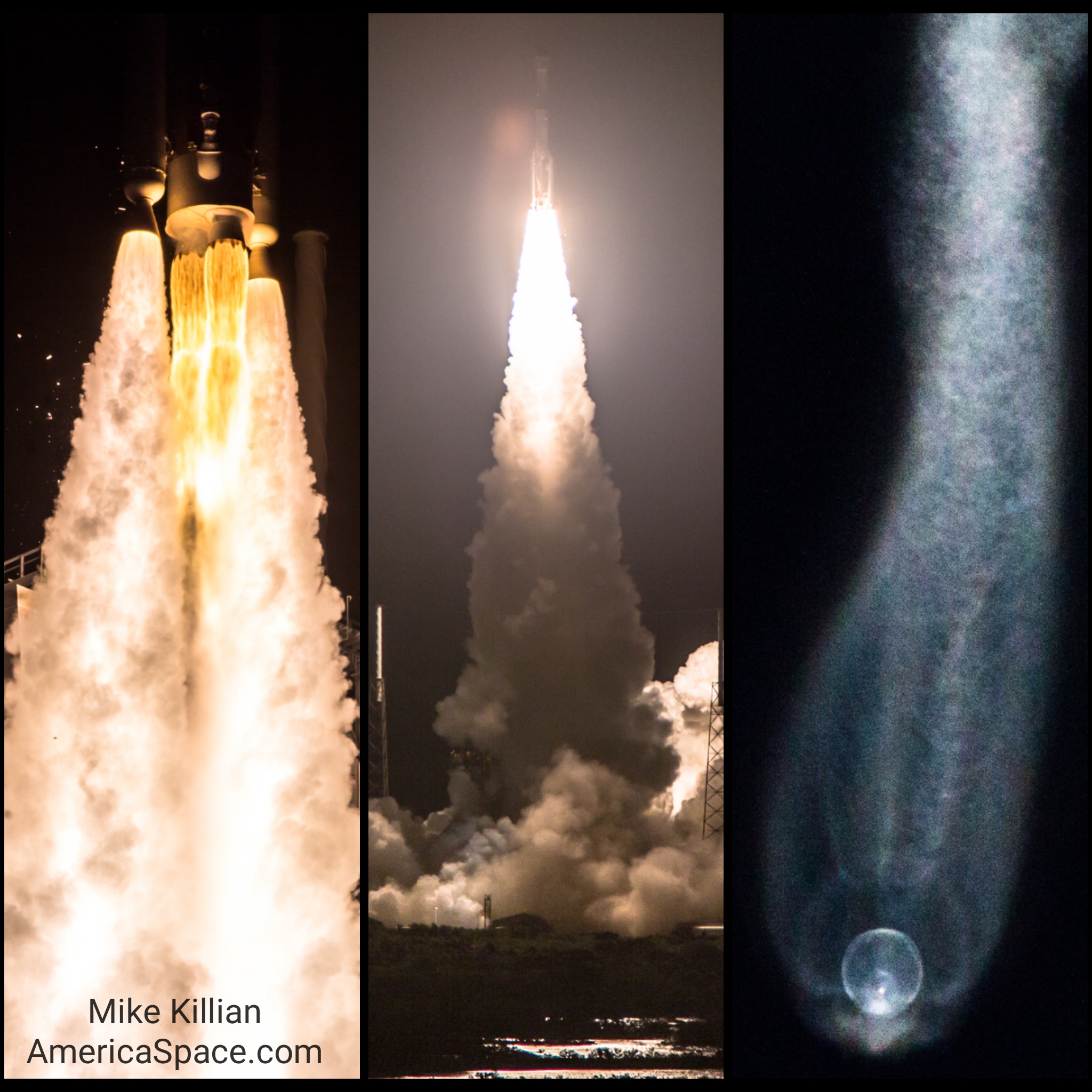
In a post-landing press conference, Boeing’s Senior Vice President of Space and Launch, Jim Chilton, noted he expects the OFT hit 85% of its test objectives, but can’t confirm until teams can retrieve all the onboard data.
With Starliner now back on Earth work is underway to return it to Boeing processing facility at Kennedy Space Center in Florida for data retrieval, analysis and refurbishment for its next mission, which will fly NASA astronauts Sunita “Suni” Williams and Josh Cassada, along with two international partner astronauts, on the first operational mission following next year’s Crew Flight Test.
And the ship now has a name for that first operational mission, “Calypso”, after the ship of famed explorer Jacques Cousteau.
“I love what the ocean means to this planet,” said Williams. “We would not be this planet without the ocean. There’s so much to discover in the ocean, and there’s so much to discover in space.”
Meanwhile, Boeing’s Starliner team is finalizing the vehicle that will fly Boeing astronaut Chris Ferguson and NASA astronauts Mike Fincke and Nicole Mann on the Crewed Flight Test as soon as mid-2020.
Watch the full landing coverage above
.
.
FOLLOW AmericaSpace on Facebook and Twitter!
.
.




